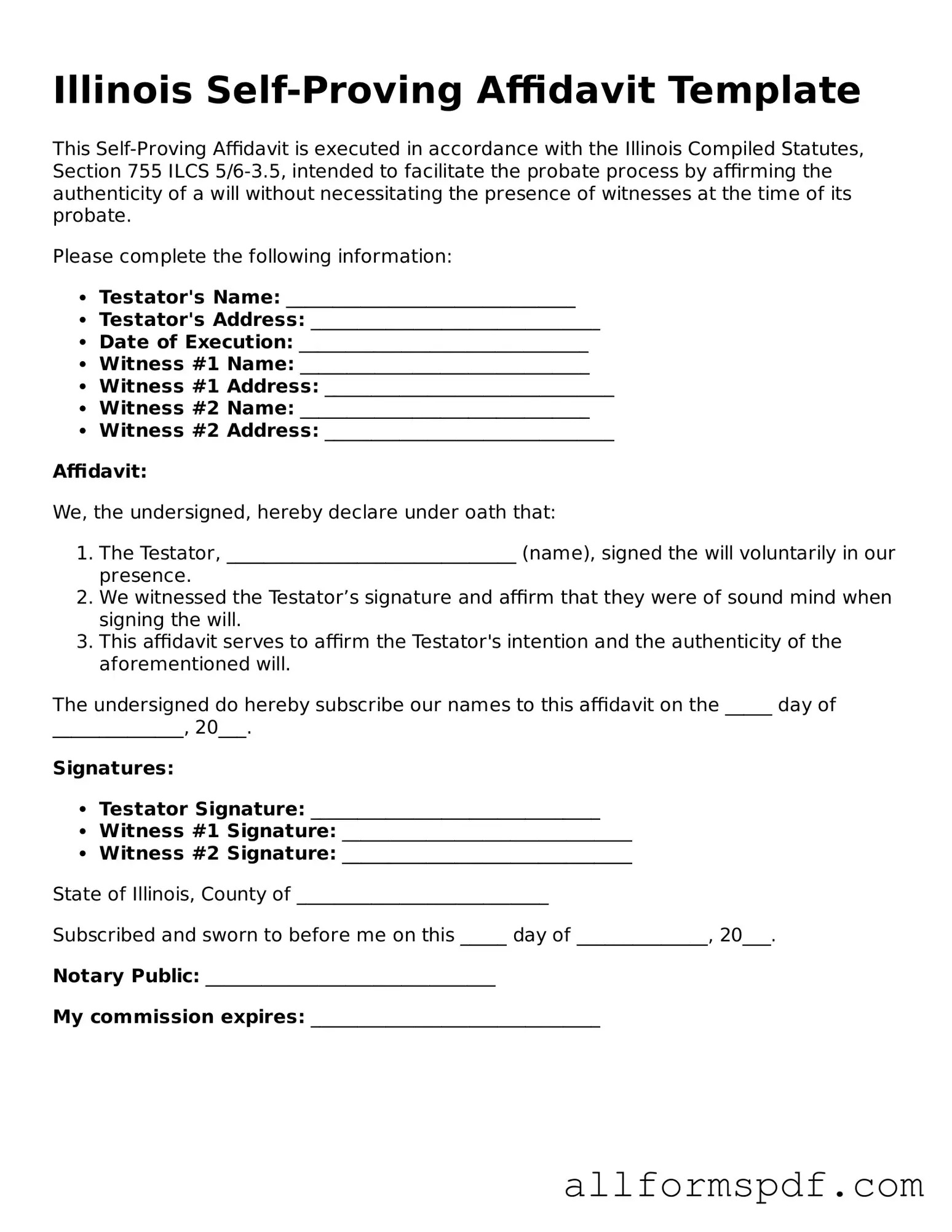Filling out the Illinois Self-Proving Affidavit form can be straightforward, but many people make common mistakes that can lead to complications. One frequent error is neglecting to include all required signatures. The form must be signed by both the testator and the witnesses. Without these signatures, the affidavit may not be considered valid.
Another mistake is failing to provide the correct date. The date of signing is crucial, as it establishes when the affidavit was executed. If the date is missing or incorrect, it can raise questions about the validity of the document.
Some individuals overlook the importance of clear identification. The names of the testator and witnesses should be written clearly and completely. Abbreviations or nicknames can create confusion and may lead to issues later on.
Additionally, people sometimes forget to include the address of the witnesses. This information is necessary for verifying their identities if the affidavit is ever challenged. Without proper addresses, the affidavit may not hold up in court.
Another common mistake is not having the affidavit notarized. While not always required, notarization can add an extra layer of authenticity. Failing to have the document notarized may lead to questions about its legitimacy.
Some individuals might also misinterpret the purpose of the affidavit. It’s meant to affirm that the will was signed in the presence of witnesses. Confusing this with other types of affidavits can lead to errors in completion.
Using outdated forms is another pitfall. Legal documents can change, and using an old version may result in non-compliance with current laws. Always ensure you are using the most recent version of the form.
People sometimes rush through the process, leading to incomplete or inaccurate information. Taking the time to review the form before submission can prevent many of these errors. It’s essential to ensure that every section is filled out correctly.
Lastly, some individuals fail to keep copies of the completed affidavit. Having a record is crucial for future reference and can help avoid disputes. Always make sure to keep a copy for your own records.
By being aware of these common mistakes, individuals can better navigate the process of completing the Illinois Self-Proving Affidavit form and ensure their wishes are honored.
